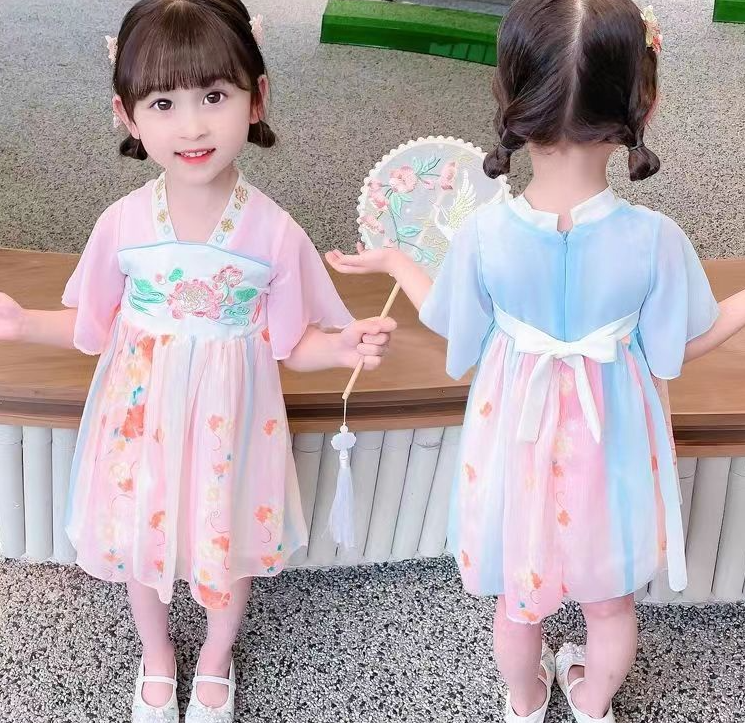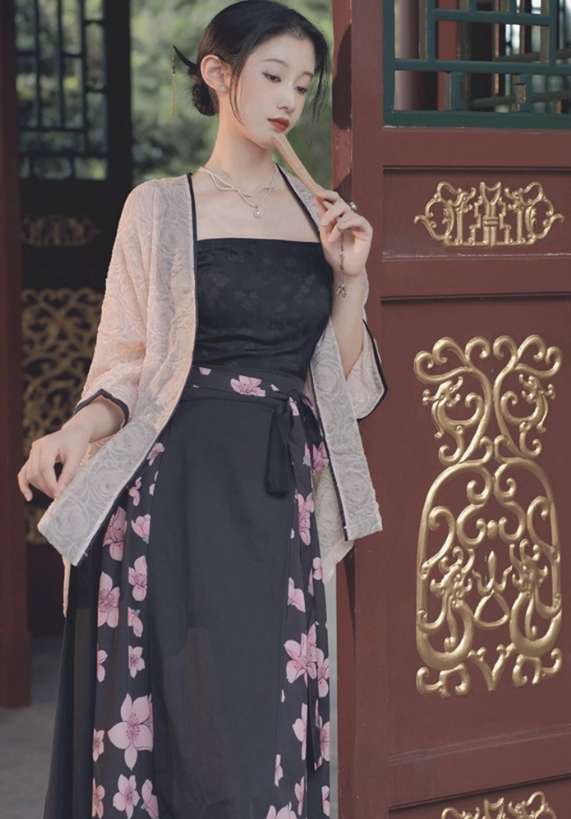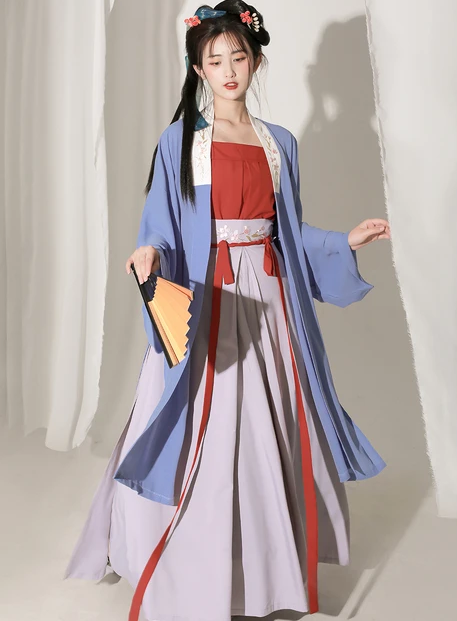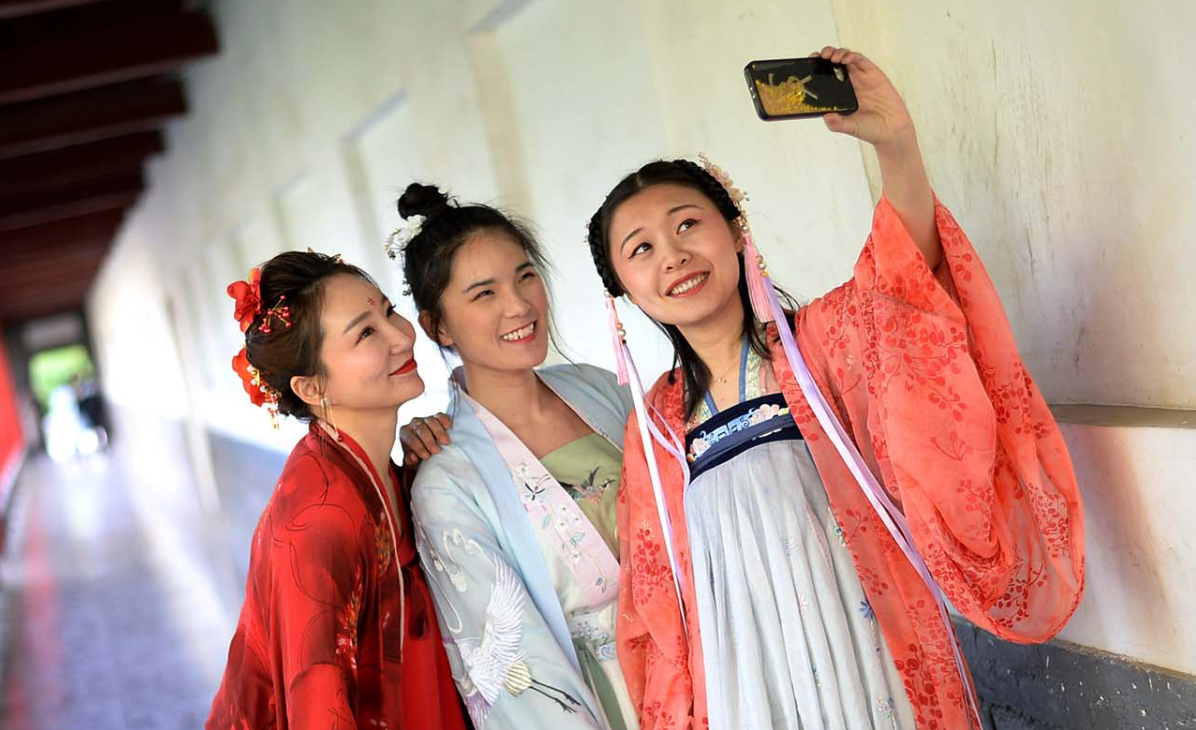Yes, you can wear Hanfu every day, but doing so involves considerations like cultural context, climate, and social norms.
Types of Hanfu
When discussing the possibility of wearing Hanfu every day, it’s crucial to understand the different types of Hanfu that exist. Each type comes with its own set of considerations for everyday use, including comfort, appropriateness for various settings, and maintenance requirements.

Everyday Hanfu
Everyday Hanfu is designed for comfort and ease of movement. These outfits often feature soft, breathable materials like cotton or linen. They’re generally easier to care for than formal variations, making them ideal for daily activities such as going to school, running errands, or casual social gatherings.
- Ease of Movement: Everyday Hanfu typically features less restrictive designs, allowing for more mobility.
- Fabric Choices: Materials like cotton or linen are common, known for their comfort and breathability.
- Price Range: They’re usually less expensive than their formal counterparts.
Some popular types of everyday Hanfu include Ruqun and Shenyi.
Formal Hanfu
Formal Hanfu is generally worn on special occasions like weddings, ceremonies, or cultural events. These outfits are often elaborately designed, featuring intricate patterns and made from luxurious materials such as silk or brocade.
- Design Complexity: Expect to see ornate embroidery and detailed patterns.
- Material Luxury: Fabrics like silk or brocade are commonly used.
- Appropriate Settings: Think weddings, ceremonies, and official cultural events.
For formal occasions, people often opt for the magnificent Kuzhe or regal Mianfu.
Seasonal Variations
Seasonal Hanfu takes into account the changing weather, offering both warmth for the winter and breathable designs for the summer. Different materials and layers are used to adapt to the seasonal changes.
- Winter Hanfu: Often made of thicker materials like wool, designed to keep you warm.
- Summer Hanfu: Lighter fabrics like thin silk or linen are used for their breathability.
Types like Duanhe for summer and Changfu for winter can be found in seasonal variations.
Modern Adaptations
Modern adaptations of Hanfu incorporate contemporary fashion elements to make them more practical for everyday wear. These could include zippers instead of traditional fastenings, or the use of modern fabrics that are easier to care for.
- Modern Convenience: Zippers or buttons may be added for ease of wear.
- Stylistic Fusion: Some designs blend Hanfu with modern fashion trends.
Popular modern adaptations include Hanfu-inspired dresses and even Hanfu streetwear options.
Practicality of Wearing Hanfu Everyday
When considering wearing Hanfu as a daily outfit, practicality is a critical aspect to consider. While the resurgence of Hanfu has made it increasingly popular for special occasions, the feasibility of its everyday wear relies on various factors. Here we discuss comfort and fit, maintenance and care, as well as accessibility and affordability.
Comfort and Fit
One of the first things to consider is how comfortable Hanfu is for daily wear. Most traditional Hanfu are loose-fitting and made of natural materials, which offers a certain level of comfort.
- Breathability: Natural fabrics like cotton or linen allow for good airflow, making them ideal for warm weather.
- Freedom of Movement: The flowing designs of Hanfu often promote ease of movement.
- Adjustability: Many Hanfu styles feature adjustable waistbands or ties, providing a customizable fit.
If you’ve ever worn or looked into Ruqun, for example, you’ll find that its design prioritizes comfort and versatility.
Maintenance and Care
Another essential factor is how easy Hanfu is to care for. Everyday wear usually requires outfits that are both durable and easy to maintain.
- Wash and Wear: Certain types of Hanfu made from cotton or linen can be machine washed, which simplifies care.
- Fabric Sensitivity: Some more luxurious materials like silk may require dry cleaning.
- Wrinkle Factor: Depending on the fabric, some Hanfu may require regular ironing to maintain their appearance.
It’s worth noting that Mianfu and other formal types are usually more delicate and may require specialized care.
Accessibility and Affordability
Lastly, the availability and cost of Hanfu can affect its practicality for daily wear.
- Retail Availability: With Hanfu gaining popularity, more stores, both online and physical, are offering a variety of options.
- Price Spectrum: Prices can range widely, from affordable, mass-produced items to more costly, tailor-made options.
- Rental Services: Some places even offer Hanfu rental services for those who want to try before making a purchase.
If you’re curious about affordability, you can start by exploring mainstream Hanfu shops or check the options in Taobao, a popular online marketplace in China that offers a wide range of prices.
Social Perceptions and Cultural Context
The idea of wearing Hanfu every day isn’t just a matter of practicality or personal preference; social perceptions and cultural contexts also play a significant role. Understanding these aspects can give you a comprehensive view of what it means to adopt Hanfu as an everyday style.
Wearing Hanfu in China
In China, the resurgence of Hanfu is often seen as a return to traditional cultural values. While wearing Hanfu is generally well-received, especially during festivals or formal events, daily wear can sometimes generate mixed reactions.
- Public Reception: Wearing Hanfu daily is gaining acceptance, particularly among younger generations. However, older generations may have varying opinions.
- Institutional Settings: Schools and workplaces might have dress codes that don’t accommodate traditional clothing, making Hanfu less feasible in those environments.
- Regional Differences: In diverse cities like Beijing or Shanghai, you’ll likely find a more accepting attitude toward Hanfu than in smaller towns.

Wearing Hanfu Abroad
Wearing Hanfu outside of China presents a unique set of challenges and opportunities, largely depending on the multicultural awareness of the country you’re in.
- Cultural Awareness: Countries with a high level of multiculturalism are generally more accepting of different traditional attires, including Hanfu.
- Cultural Appropriation Concerns: When wearing Hanfu abroad, be prepared to answer questions about cultural appropriation and educate people about its historical and cultural significance.
- Community Support: Diaspora communities can offer a supportive environment for wearing Hanfu daily.
The Role of Media and Social Influencers
Media portrayal and social influencers significantly impact the perception of Hanfu as an everyday option.
- Positive Representation: Platforms like Weibo and TikTok feature Hanfu enthusiasts, which helps normalize the attire.
- Fashion Industry: Fashion magazines and online articles often feature Hanfu, which increases its visibility and acceptability as a daily wear option.
- Influencer Impact: Social influencers often collaborate with Hanfu brands, reaching a broad audience and encouraging everyday wear.
Challenges and Considerations
Wearing Hanfu every day might sound appealing, especially if you’re passionate about traditional Chinese culture. However, the endeavor comes with its own set of challenges and considerations that you must be prepared for. Here we delve into issues related to cultural appropriation, professional dress codes, and weather suitability.
Cultural Appropriation Concerns
The term “cultural appropriation” often pops up in discussions around wearing traditional attires from cultures one does not belong to. While Hanfu originates from Chinese culture, its worldwide appeal raises important questions.
- Context Matters: The intention behind wearing Hanfu can make a big difference. If you’re respectful and aware of its cultural heritage, you’re more likely to be perceived positively.
- Educational Role: You may need to educate people around you about what Hanfu represents, especially if you’re wearing it outside of China.
- Public Reaction: Reactions can vary depending on the community and their familiarity with Hanfu and its significance.
Dress Codes and Professional Settings
In most modern professional settings, there are established dress codes that might not include the flexibility to wear Hanfu.
- Corporate Culture: In strictly corporate settings, Hanfu may not meet dress code guidelines. However, creative or cultural industries might be more open to it.
- Negotiating Space: If you wish to wear Hanfu at work, it could be useful to discuss this with Human Resources or management.
- Event Specifics: Wearing Hanfu at corporate events that celebrate cultural diversity could be a suitable compromise.
These challenges become evident when you compare Hanfu with what is generally considered professional attire in most Western countries, as well as in modern Chinese corporate culture as documented on Wikipedia.

Weather and Climate Considerations
Depending on where you live, the weather could be a significant factor in your decision to wear Hanfu daily.
- Seasonal Fabrics: Hanfu comes in a variety of materials suitable for different seasons. But you’ll need to invest in multiple styles to accommodate fluctuating weather.
- Layering: Hanfu styles often involve multiple layers, which might not be suitable for extremely hot climates.
- Weather Resistance: Unlike some modern clothing, traditional Hanfu is not designed to be water-resistant or insulated against extreme cold.
Therefore, geographical factors like your local climate can influence how practical it is to wear Hanfu every day.
Benefits of Wearing Hanfu Daily
While wearing Hanfu every day comes with its set of challenges, the benefits can also be considerable. From fostering a connection with traditional Chinese culture to making a unique fashion statement, daily Hanfu wear has multiple advantages. Let’s explore these benefits in detail.
Cultural Connection and Preservation
In an era of globalization where traditional customs can get overshadowed by modern trends, wearing Hanfu daily serves as a symbol of cultural preservation.
- Heritage Pride: Donning Hanfu can make you feel more connected to your roots or give you a sense of belonging to a culture you admire.
- Historical Awareness: Wearing Hanfu can serve as an educational tool, sparking curiosity and discussions about Chinese history and traditions.
- Cultural Diplomacy: Wearing traditional attire like Hanfu can create a platform for cultural exchange, fostering better understanding and respect among different communities.
Aesthetic and Personal Expression
Hanfu isn’t just traditional clothing; it’s also a versatile fashion statement that allows for personal expression.
- Fashion Versatility: With various styles, patterns, and materials, Hanfu offers a wide range of fashion choices, far beyond the conventional Western wardrobe.
- Creativity: Styling Hanfu with modern accessories can create a unique look that combines both traditional and contemporary fashion elements.
- Visual Impact: The bright colors and intricate designs commonly found in Hanfu can make you stand out in a crowd, emphasizing individuality.
The aesthetic values of Hanfu are often highlighted in visual media, such as in popular Chinese dramas.
Health and Comfort Benefits
Beyond aesthetics and cultural significance, Hanfu also offers some physical benefits that contribute to its suitability for daily wear.
- Breathability: As previously mentioned, Hanfu often uses natural fibers like cotton and silk, which are breathable and less likely to cause skin irritations.
- Comfortable Design: The loose-fitting nature of most Hanfu styles makes them comfortable for long periods, whether you’re sitting at a desk or moving around.
- Physiological Benefits: The design of some Hanfu items, such as wide sleeves or flowing skirts, may promote better blood circulation and comfort.

How to Start Wearing Hanfu Everyday
If you’ve weighed the pros and cons and decided to make Hanfu a part of your daily life, the next step is figuring out how to make this transition. The path to incorporating Hanfu into your daily routine is easier than you might think, especially when you consider the following aspects.
Where to Buy or Make Hanfu
The first question to address is where to acquire Hanfu garments suitable for daily wear.
- Online Shops: Several websites specialize in selling Hanfu, offering a variety of styles and sizes. Make sure to read reviews and check sizing guides before making a purchase.
- Local Markets: If you live in or near a city with a sizable Chinese community, you might find shops that sell Hanfu.
- Custom-Made: For a more personalized touch, consider getting your Hanfu custom-made. Tailors specializing in traditional Chinese clothing can help you achieve a perfect fit.
Refer to Hanfu on Wikipedia for a deeper understanding of its historical roots and variations, which might help you make better purchasing decisions.
Tips for Mixing and Matching
Once you have your Hanfu, the next step is to integrate it into your existing wardrobe.
- Color Coordination: Pay attention to the colors in your Hanfu and try to match them with modern garments and accessories.
- Layering: A Hanfu top can work well when layered over a pair of jeans or matched with a modern skirt. Similarly, Hanfu skirts can be worn with modern blouses.
- Accessorizing: Use contemporary accessories like belts, handbags, or even modern jewelry to create a fusion look.
Transitioning from Occasional to Daily Wear
If you’ve previously worn Hanfu only on special occasions, transitioning to daily wear requires some adjustments.
- Start Small: You don’t have to switch entirely to Hanfu right away. Begin by incorporating one or two pieces into your weekly rotation.
- Occasion Appropriateness: Consider the settings where you’ll be wearing Hanfu. Start with casual events or places where the dress code is relaxed.
- Comfort Check: Make sure the Hanfu you choose for daily wear are comfortable for prolonged periods.